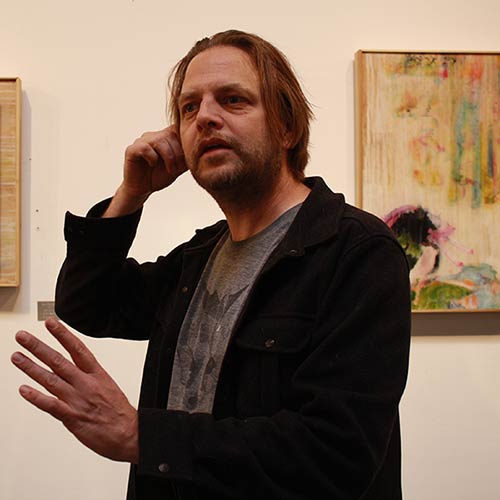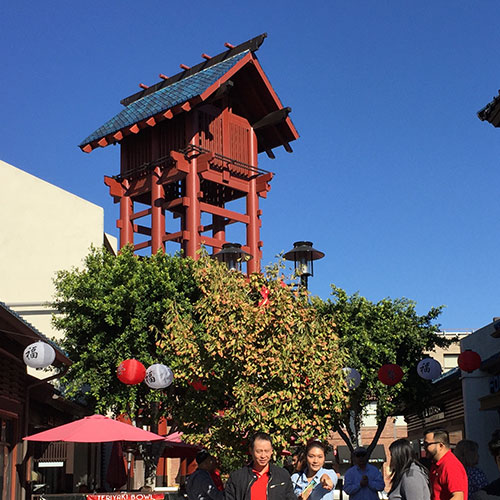Little Tokyo is one of Los Angeles' most recognizable destinations, serving as a mecca for both Japanese culture and character.
Living there, however, is a different story. As the 130-year old neighborhood has shrunk from a sprawling downtown district in the mid-20th century to its current five block radius east of Civic Center, the number of people who call Little Tokyo home has severely dwindled.
Once boasting 30,000 Japanese Americans in the years before World War II, the region is now home to predominantly 2,000 low-income, monolingual seniors.
But as high-rise apartments and luxury lofts begin dotting Little Tokyo’s landscape, fresh tenants are coming in. And now, many who live or work in the community are worried about a dual effect: new residents who don’t honor the neighborhood’s rooted past, and old residents being quietly priced out.
"We have to figure out what it’s going to mean when you have these new residents moving in who aren’t necessarily interested in being part of the community, or don’t realize they’ve moved into a very active living community versus just any random neighborhood," said Kristin Fukushima, a project manager with the Little Tokyo Community Council.
Like much of downtown, Little Tokyo has undergone a rapid wave of development in the past few years. Advocates for the neighborhood’s sustainability don’t want to shun change, but are quick to note what’s at risk: the historical and cultural character of one of the last Japantowns in the country.
"People choose Little Tokyo because it’s a touchstone for Japanese-Americans throughout Southern California,” said Evelyn Yoshimura, the director of community organizing at Little Tokyo Service Center. “That would be lost if we don’t preserve it."
And the quest for preservation is a race against time. Little Tokyo has experienced an ongoing neighborhood revitalization process since the mid 2000s. While the Recession halted the first wave, it has quickly picked up speed in the last few years.
"This time around, development has been a lot more aggressive," Fukushima said.
Much of the development surrounds new businesses, housing units and construction on Metro’s regional connector. The project is set to be completed in 2020, and is predicted to be the busiest L.A. transportation hub after Union Station.
Fukushima said one of the biggest issues for those who live and own businesses in Little Tokyo is figuring out who exactly is moving into the community, and at what rate. Development managers are tight-lipped about their new tenants and how full the buildings are.
"You can’t get a straight answer on vacancies, Yoshimura said.
And as market rate rentals continue to sprout in the neighborhood, with many fetching upward of $2,000 for a studio apartment, those who live in low-income housing are now at risk of being priced out.
To combat this, the Little Tokyo Service Center hopes to maintain a sufficient amount of affordable housing units maintained alongside current development.
"Gentrification is not the problem per se. The problem is displacement,” Yoshimura said. “Our challenge is to get it where private investments raise the level of quality of the neighborhood while putting in safeguards to prevent that displacement."
Much of the battle now is mobilizing the senior community toward making their voice heard as development continues chugging through.
"The capacity is there; we just need to know how to explain it right to them," Yoshimura said. “Once you do, you’re going to have to hold them back."

Some seniors in the community are already there. Steve and Patti Nagano moved to Little Tokyo from Torrance four and a half years ago, and live in Teramachi, one of a handful of senior condominium complexes in Little Tokyo.
They’ve witnessed first hand the large wave of development that began just as soon as they moved in, and have embedded themselves in local community advocacy to protect Little Tokyo’s position as a Japanese cultural center.
"We’re trying to educate people who move into the new apartments that there is a history and culture here," Steve said. "They should know that."
While they are happy Little Tokyo is being revitalized, they are worried about the lack of stability surrounding a community soon to be dominated by rentals.
"What does that mean if they are all apartments?” Patti said. “There’s no permanence."
"It’s not only the type of people," Steve added. "Many of the older seniors here now are in a particular stage in their life where their involvement is somewhat limited in terms of moving forward and enhancing the community in maintaining its history and culture."
The Naganos are hoping they can help lead the charge in invigorating Little Tokyo’s current senior community.
But for now, local leaders are focused on finding the right balance between moving Little Tokyo forward and honoring its longstanding tradition.
"This is about looking into the future of Little Tokyo, not about just holding tightly onto the past,” Yoshimura said. "It’s about connecting the two, and one can serve the other very well."


